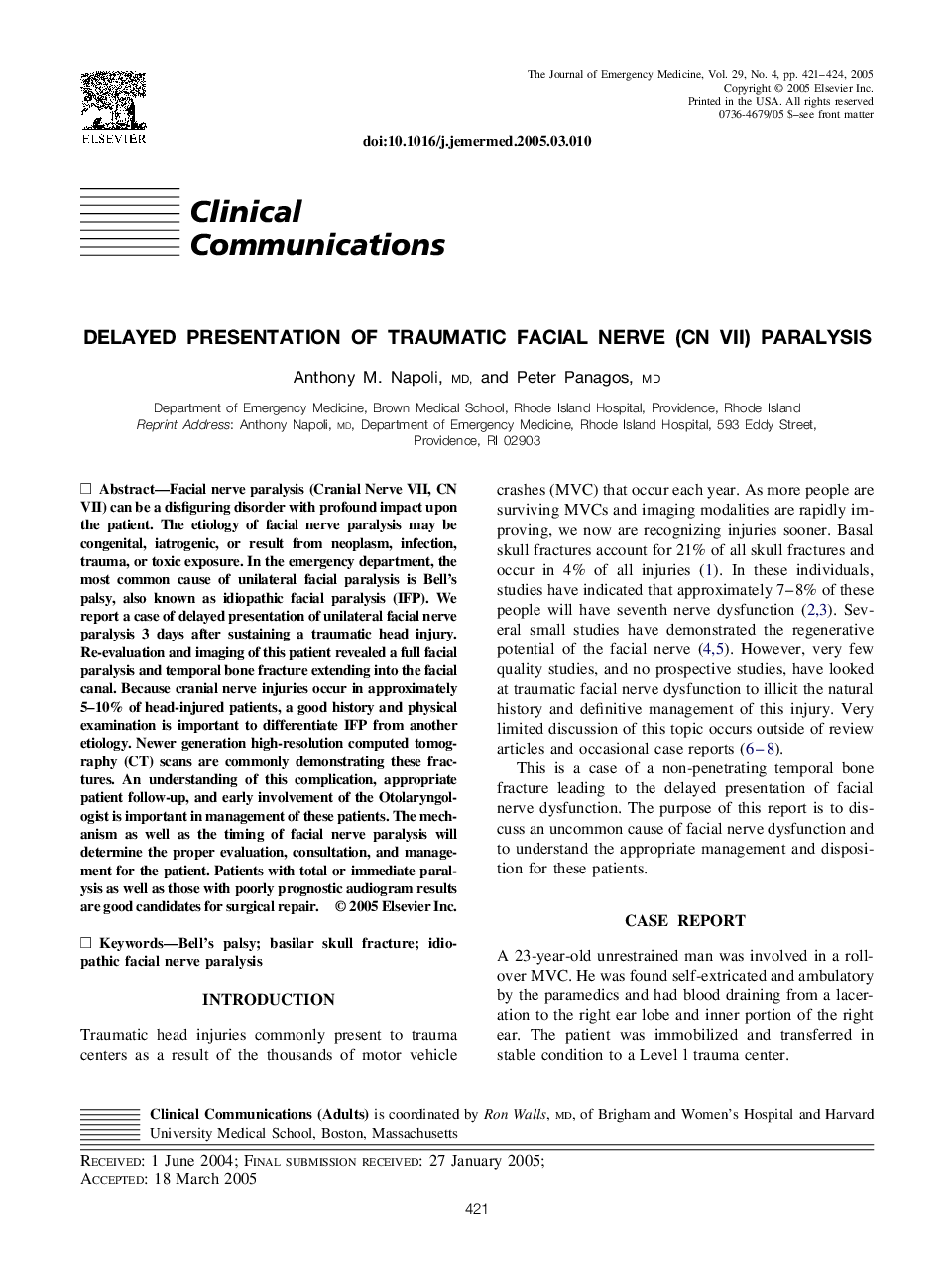| Article ID | Journal | Published Year | Pages | File Type |
|---|---|---|---|---|
| 10021625 | The Journal of Emergency Medicine | 2005 | 4 Pages |
Abstract
Facial nerve paralysis (Cranial Nerve VII, CN VII) can be a disfiguring disorder with profound impact upon the patient. The etiology of facial nerve paralysis may be congenital, iatrogenic, or result from neoplasm, infection, trauma, or toxic exposure. In the emergency department, the most common cause of unilateral facial paralysis is Bell's palsy, also known as idiopathic facial paralysis (IFP). We report a case of delayed presentation of unilateral facial nerve paralysis 3 days after sustaining a traumatic head injury. Re-evaluation and imaging of this patient revealed a full facial paralysis and temporal bone fracture extending into the facial canal. Because cranial nerve injuries occur in approximately 5-10% of head-injured patients, a good history and physical examination is important to differentiate IFP from another etiology. Newer generation high-resolution computed tomography (CT) scans are commonly demonstrating these fractures. An understanding of this complication, appropriate patient follow-up, and early involvement of the Otolaryngologist is important in management of these patients. The mechanism as well as the timing of facial nerve paralysis will determine the proper evaluation, consultation, and management for the patient. Patients with total or immediate paralysis as well as those with poorly prognostic audiogram results are good candidates for surgical repair.
Keywords
Related Topics
Health Sciences
Medicine and Dentistry
Emergency Medicine
Authors
Anthony M. MD, Peter MD,
